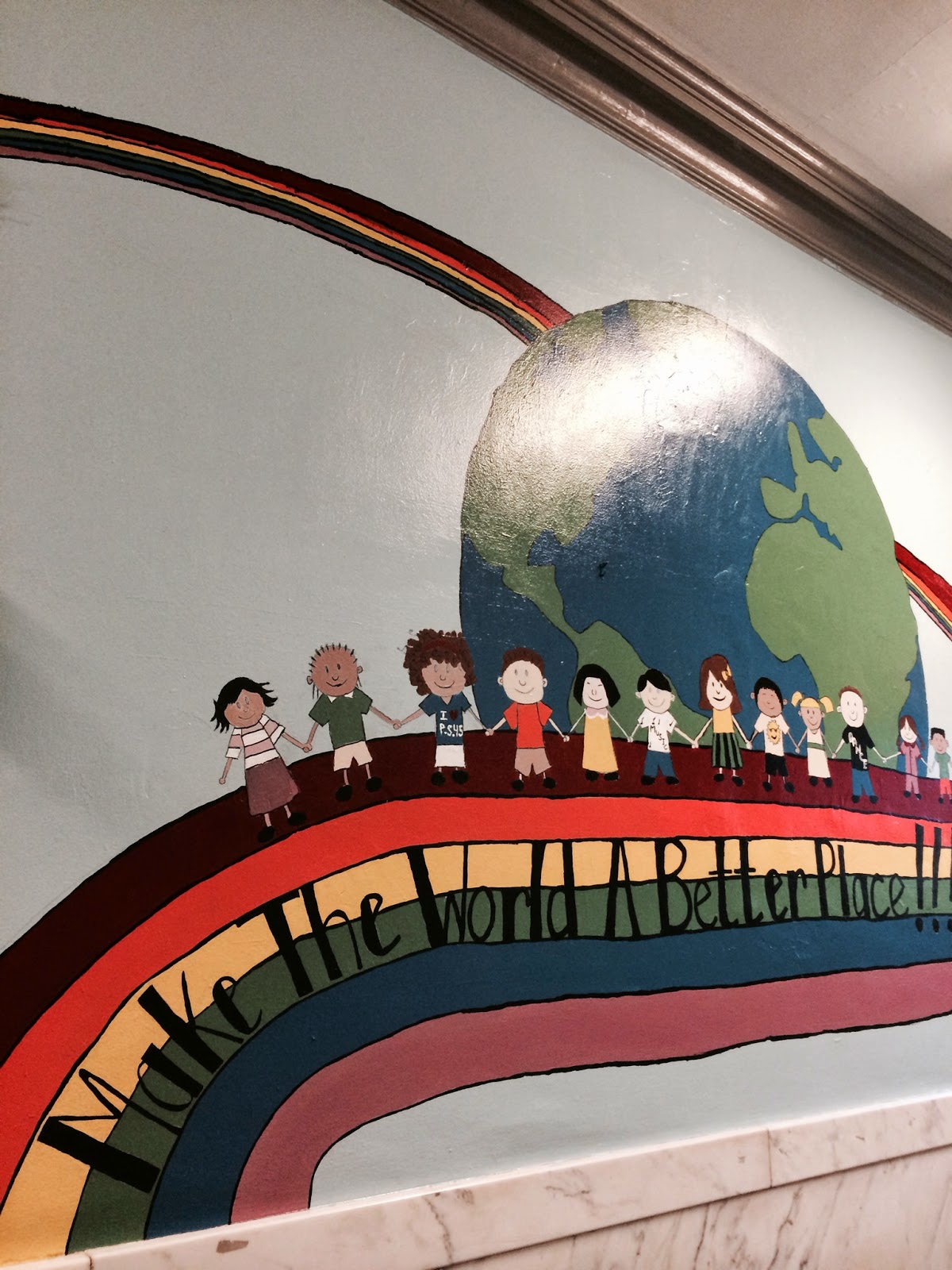Visiting Staten Island's P.S. 45 (John Tyler School) inspired me. (For those reading this outside of New York City, P.S. stands for Public School.)
Every student in this elementary school participated in an awesome kick-off assembly honoring Respect for All Week. The students were led in a special reading of Kathryn Otoshi's book Zero by a group of their peers involved in the SOAR program. (To facilitate character building, New York State Senator Andrew Lanza sponsored One Can Count in all the elementary schools in his district. Multiple copies of One and Zero were provided to each school.)
According to guidance counselor and SOAR mentor Libby McPike,
SOAR stands for Safe Organized Attitude Respect. It's our school wide positive behavior model. Kids follow these expectations and when caught doing well, can be rewarded with eagle dollars (eagle is our school mascot). Then they shop in the SOAR STORE for items anywhere from erasers to DVD players (all run on donations).
P.S. 45's approach to teaching respect and character education is one more example to me that "leadership is the anti-bully." And sometimes teaching leadership takes a bit of creativity. Ms. Libby and her students have plenty of that to share. Here's just a snippet of the kind of activities that this dedicated professional and the students she mentors have developed to engage the entire school -- staff and students alike -- in the empowering messages of kindness, tolerance and respect.
Monday:
Wear Purple: Purple is the color of good judgment. It is said if you surround yourself with purple you will have peace of mind. Purple is a good color to use in meditation. Purple has been used to symbolize magic and mystery, as well as royalty. Being the combination of red and blue, the warmest and coolest colors, purple is believed to be the ideal color.
Activity: Good Deed CatalogIt goes without saying that it’s important to teach kids to do nice things for one another. During Respect for All Week, keep a running tally of good deeds that students perform. These can include helping clean up, consoling a sad classmate, sharing, helping out a friends, etc. Tell your class that if they reach a certain number of good deeds for the week, they will receive some sort of prize (Ex. Lunch with the teacher, homework pass, Good Deed Certificate, Etc.)
On the day I visited, the gym it was an enthusiastic sea of purple.
After reading the book, the group of SOAR students (as young as 3rd grade) led the entire school in a question and answer session based on the themes of Zero, including "What does it mean to have a hole in your middle?" and "How did it feel to have the other numbers step up?".
5 Things I Learned at P.S. 45
• A thoughtful, creative and enthusiastic administration is the foundation for promoting high quality character education. (A shout out to principal Ms. Chavez and parent coordinator Mrs. Poli who allowed me to be there and so graciously welcomed me to their school.)
• It's a worthy commitment to create an environment where leadership is part of the culture year round.
• Helping students develop leadership skills such as public speaking gives children confidence and confidence is the key to resilience.
• When students are expected to listen to each other and value each person's opinion, they rise to the occasion. (Note: Amazing how many students were eager to be a part of the question/answer session. The students obviously felt safe to share their opinions with a gym full of their peers.)
• The students had fun. Teaching children to step up helps children SOAR and it's never boring.
(Speaking of "stepping up," Ms. Libby went the extra step and wore purple shoes!)
Teaching leadership and respect takes a lot of hard work. Mentoring children is exhausting and never a perfect process. For those reasons, I am deeply grateful for the fine professionals at P.S. 45 and other schools around the country who hang in there every day and give it 100%. You deserve a parade.
Thank you.



